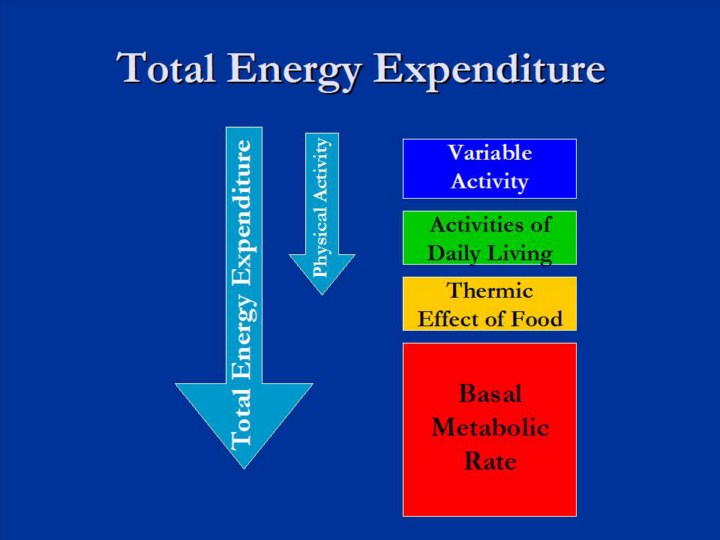| front |1 |2 |3 |4 |5 |6 |7 |8 |9 |10 |11 |12 |13 |14 |15 |16 |17 |18 |19 |20 |21 |22 |23 |24 |25 |26 |27 |28 |29 |30 |31 |32 |33 |34 |35 |review |
 |
Total Energy Expenditure is the total amount of energy (measured in kilocalories) that is expended over a specific time period (usually measured over a 24 hour period).
There are three major components of Total Energy Expenditure. These include: basal metabolic rate, thermic effect of food, and physical activity. The percentages provided below are estimates that are typical for a sedentary individual and these estimates will vary based on an individual’s physical activity status (active vs. inactive). For example, the contribution that physical activity makes to total energy expenditure is greater for active individuals compared to their sedentary counterparts.
Basal Metabolic Rate (~70%) kilocalories your body needs to properly function while at rest.
Thermic Effect of Food (~10%) kilocalories your body uses when it is digesting food.
Physical Activity (~20%) is the most variable component of total energy expenditure and is divided into two main components:
•Activities
of Daily Living
such as bathing, eating, and grooming.
•Variable
Activity
such as sports,
leisure, and occupational physical activity.
Recommended Reading: Ravussin E and Bogardus C (1992). A brief overview of human energy metabolism and its relationship to essential obesity. American Journal of Clinical Nutrition, 55: S242-S245. |